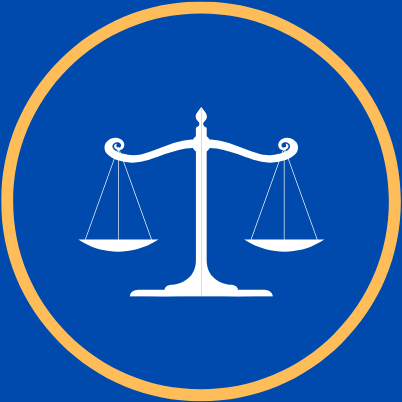Image courtesy of Disney.
Disney is no foreigner to cultural mishaps. In an attempt to diversify its cast of characters and explore various cultural backgrounds, Disney has often ended up falling flat on its face, most recently with the live-action adaptation of Mulan, which was filmed in Xinjiang, China, where millions of ethnic Uighur Muslims are undergoing what some are calling genocide, and whose lead actor, Liu Yifei, has spoken against the Hong Kong democracy protesters.
But I want to look at a film released more than a decade ago, to critical and viewer acclaim, that has largely evaded any criticism, that film being, of course, The Princess and the Frog. For whatever reason, this film has slipped through the cracks despite being one of the most egregious examples of historical revisionism in a children’s movie.
The movie takes place in the 1920’s in New Orleans, and centers on the story of a woman by the name of Tiana, who is trying to buy her own restaurant. Along the way, we meet Tiana’s friend Charlotte, a prince named Naveen, and an evil voodoo dealer who turns them both into frogs, but in the end, Tiana and the prince get married, they stop being frogs, the voodoo guy is defeated, and the restaurant is opened.
So what’s wrong with that? Well, what I have done is conveniently removed the race of every character I just mentioned. The matter of fact is that Tiana is black. Naveen is of an unspecified race of a made-up country called Maldonia, but he is brownish tan. Charlotte is not just a rich white woman, she is a cartoonishly stereotypical Southern Belle.
With this is mind, throughout the movie, we see blacks and whites sharing the same spaces, interacting, and even forming friendships. Tiana works for a restaurant owner who is black. The black-owned restaurant is situated in a nice part of town. Tiana is trying to start her own business and borrows a loan from a pair of white brothers who are willing to offer.
And all of this is supposedly taking place in the 1920s, in the Deep South.
This is little more than a Disney fantasy. In real life, black Americans in the South had their rights and liberties taken away by white Southerners, who had regained complete control of Southern government after a very brief period of progress following the Civil War. As an example, here’s an excerpt from a “black code” written into law in St. Landry Parish, Louisiana:
Sec. 1. …No negro shall be allowed to pass within the limits of said parish without special permit in writing from his employer…
Sec. 3. . . . No negro shall be permitted to rent or keep a house…
Sec. 4. . . . Every negro is required to be in the regular service of some white person, or former owner, who shall be held responsible for [their] conduct…
Sec. 6. . . . No negro shall be permitted to preach, exhort, or otherwise declaim to congregations of colored people, without [permission]…
Sec. 8. . . . No negro shall sell, barter, or exchange any articles of merchandise or traffic within said parish without the special written permission of his employer…
Excerpt from the St. Landry Parish Black Code, 1865
In addition, ultra-racist president Woodrow Wilson had just finished segregating the civil service, wanton violence against blacks, such as with lynchings or the 1921 Tulsa Massacre, raged across the South, and perhaps most frighteningly, the white supremacist Ku Klux Klan reached its zenith in 1925, with membership in the millions.
Of course, you’d be shocked to learn any of that having watched The Princess and The Frog, and I wouldn’t blame you. There is not a single negative interaction based on race in the entire movie, save for one scene where the aforementioned two brothers mention that “a woman in [Tiana’s] background” would have difficulty running a restaurant by herself, and according to the unofficial Disney Fandom wiki, that comment was not even towards her race, but her class.
By completely erasing racism from the movie, Disney gives us an image of life for blacks in the South during the Jim Crow Era that is disgustingly scant of any awareness for the horrific abuse that black citizens underwent. In fact, the movie gives off a “the black and white folks got along just fine back then!” vibe that is suspiciously similar to Neo-Confederate propaganda… as in, one of the biggest talking points of Neo-Confederates is to say that there were no tensions whatsoever between blacks and whites during slavery, and later segregation.
Here is one passage making such an argument from a “Pro-Confederacy” textbook:
The master often had a barbecue or a picnic for his slaves. Then they had a great frolic. Even while working in the cotton field they sang songs. The beat of the music and the richness of their voices made work seem light.
Excerpt from History of Georgia, by Ellis Merton Coulter, American Book Company
Blacks and whites having a “great frolic?” Why, that’s just like when we see Tiana and Naveen attend Charlotte’s party!
So what would The Princess and the Frog really look like? The restaurant that Tiana worked at would be in the blacks-only ghetto of New Orleans, but as a woman, she would be at home, taking care of her children, not working. The two brothers would have laughed at a woman, not to mention a black woman, asking for a loan. And Naveen’s arrival to New Orleans would have been met by a mob of xenophobic white city-dwellers eager for a lynching.
As they say, the road to hell is paved with good intentions, and in a genuinely noble attempt to diversify their cast of characters and explore nonwhite cultures, Disney instead delivers a revisionist piece of propaganda any Klanner would be drooling to get their hands on.
Now, I know what you’re going to say. In fact, the thought has been growing in your head this whole time.
“Come on, Anthony. You’re taking this too seriously! It’s just a kid’s movie, for God’s sake! It’s not meant to be an accurate representation of history!”
To which is respond: it’s not an accurate representation of history? The clothing, architecture, environment, vehicles, and speech are all historical, to a T. Why is everything else historically accurate in the movie except for the teeny, tiny fact that the South was oppressive to black Americans?
And the fact that it’s a kid’s movie is actually an argument for my position. The fact that it’s a kid’s movie is what makes The Princess and The Frog so dangerous, because kids are the most easily malleable. Whereas adults are able to see the movie and acknowledge that it is not an accurate representation of Southern life, children will watch this movie and leave it thinking that life was hunky-dorey in the South and that you can be anything you want to be, both dangerous falsehoods.
I understand that a balance must be struck between a film that is fair to history while being okay for kids to watch, but The Princess and The Frog does not even make an attempt. No, I don’t think we need to see lynchings or white hoods on screen, but why not include a “Whites Only” sign in the background, or have a few white characters whisper disapprovingly when Naveen passes by? It doesn’t need to be in-your-face racism, but such details will go a long way towards making kids understand that everything was not peachy-keen between blacks and whites in the South.
Honestly, Disney has no excuses. They didn’t have to make the film in 1920’s New Orleans. They could’ve picked Chicago or New York, two northern cities that also had a rich jazz scene but which were far more progressive (although still very racist.) They could’ve picked a different time, a different era, or even a different nation. It doesn’t even have to be real, they can just make something up! They can create a universe where racism doesn’t exist, and then they don’t have to address the race question whatsoever.
The final nail in the coffin is knowing that Disney has already succeeded at portraying race relations properly in a kid’s movie. Look no further than Pocahontas, where we see serious conflict between the English colonists and the Powhatan, even culminating in a song where the English and the Powhatan call each other “savages.” If they can do it right in 1995, why not in 2009?
Instead, Disney tries to have its cake and eat it too, and as a result ends up feeding us an irresponsible rewriting of Southern history.




Leave a comment